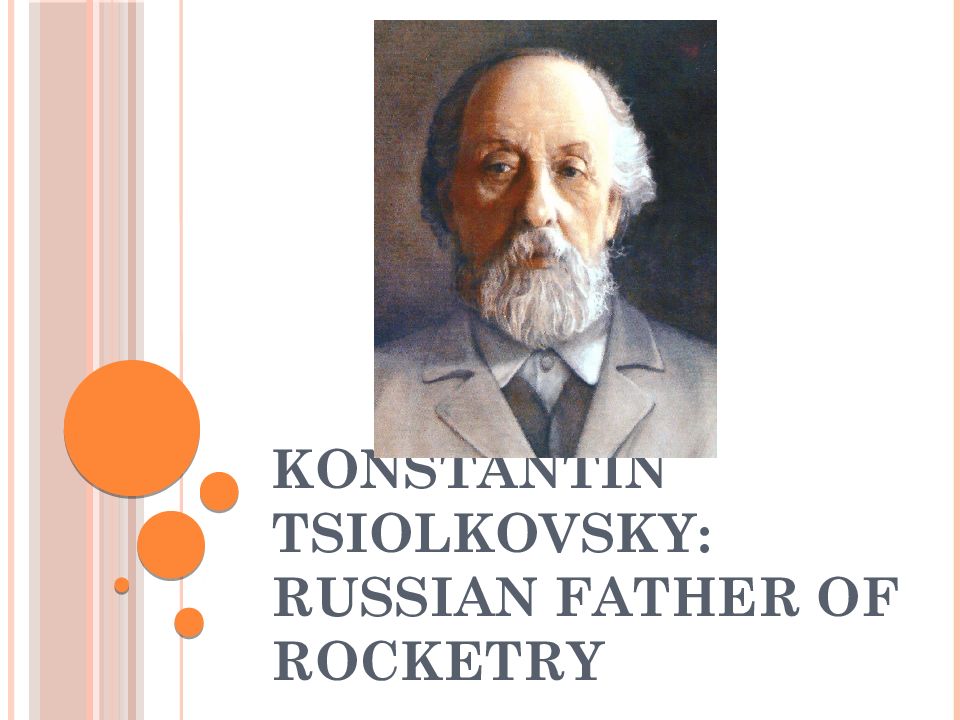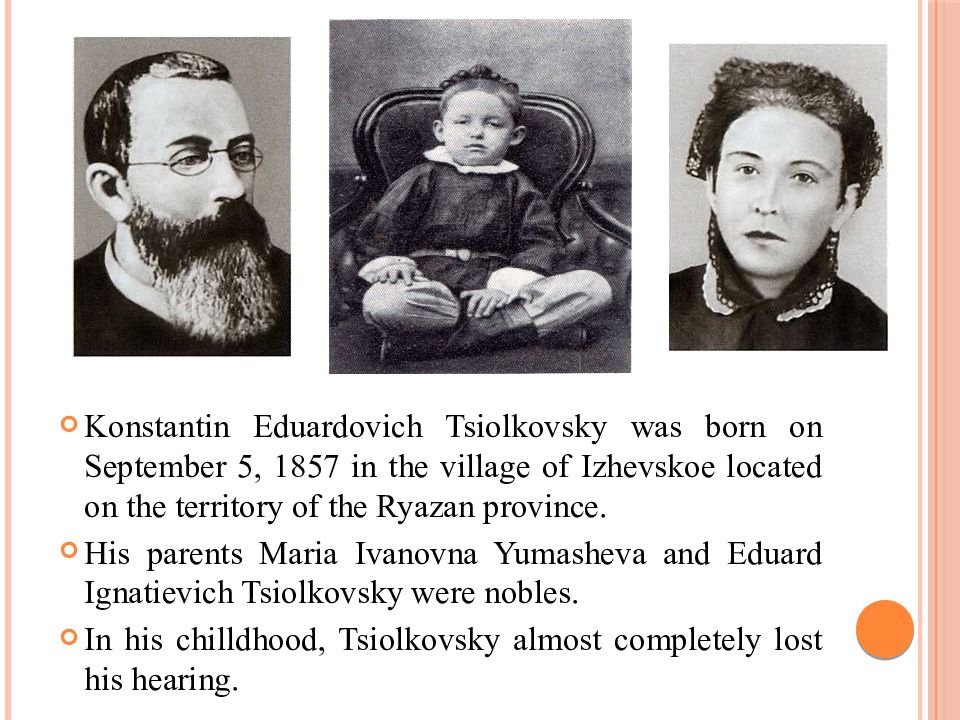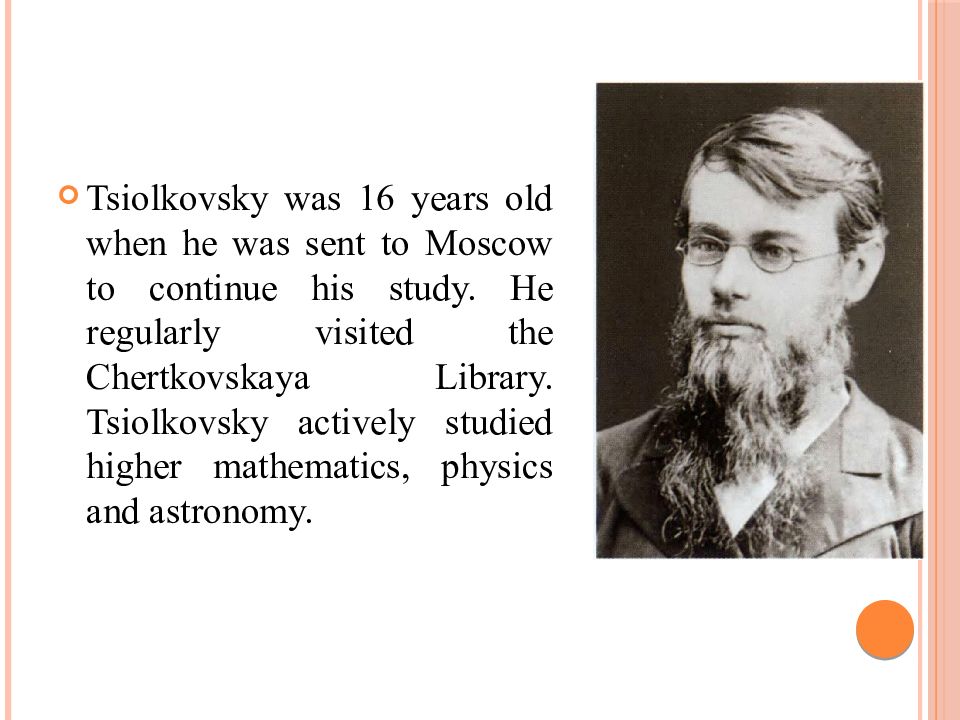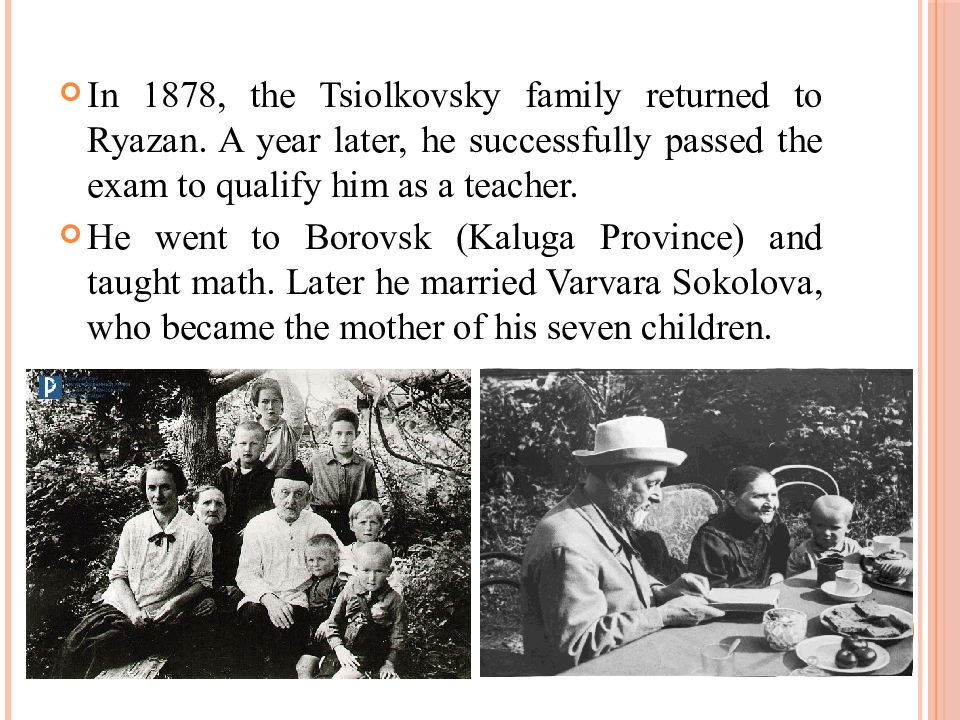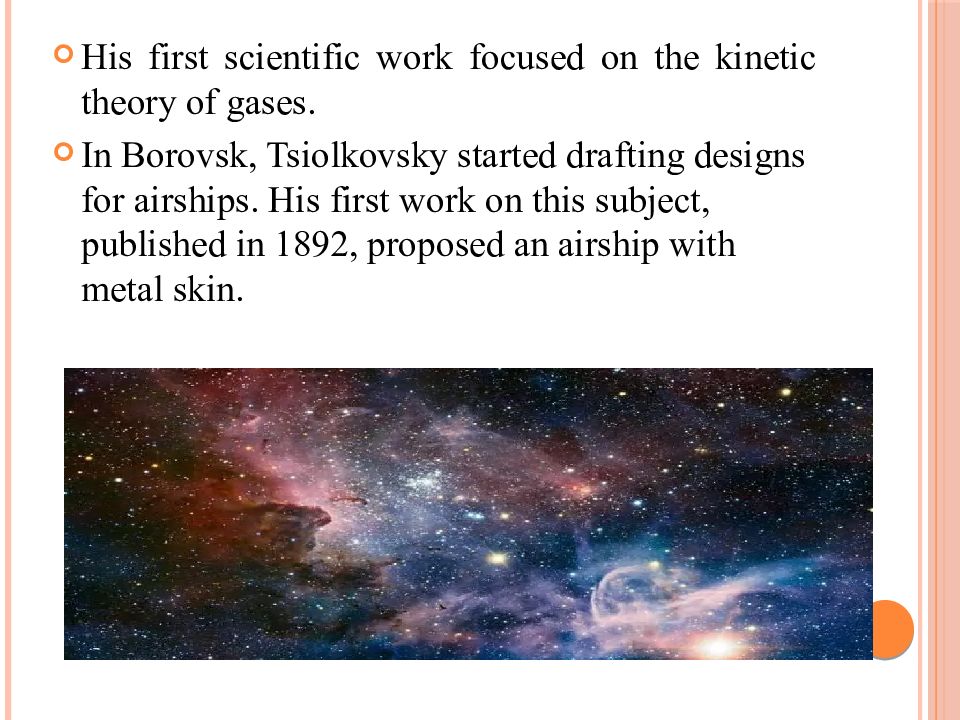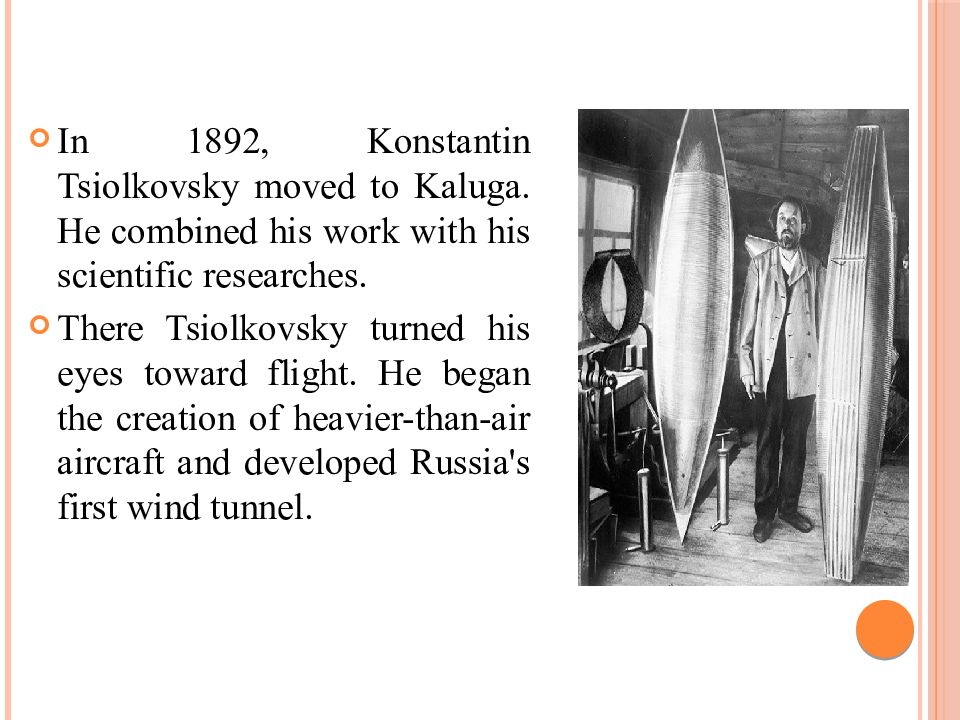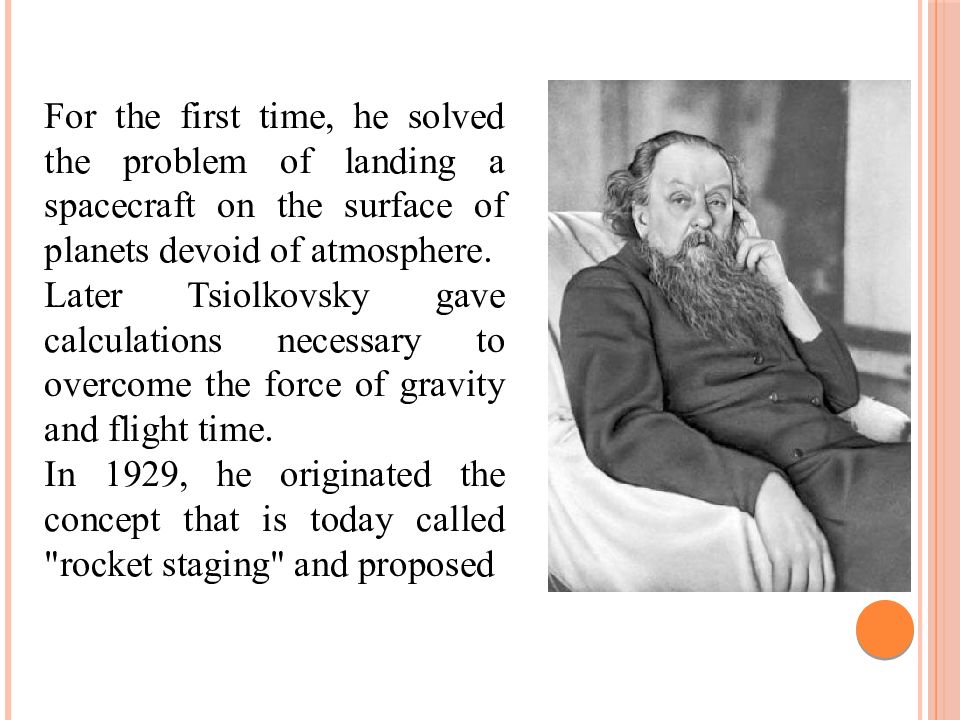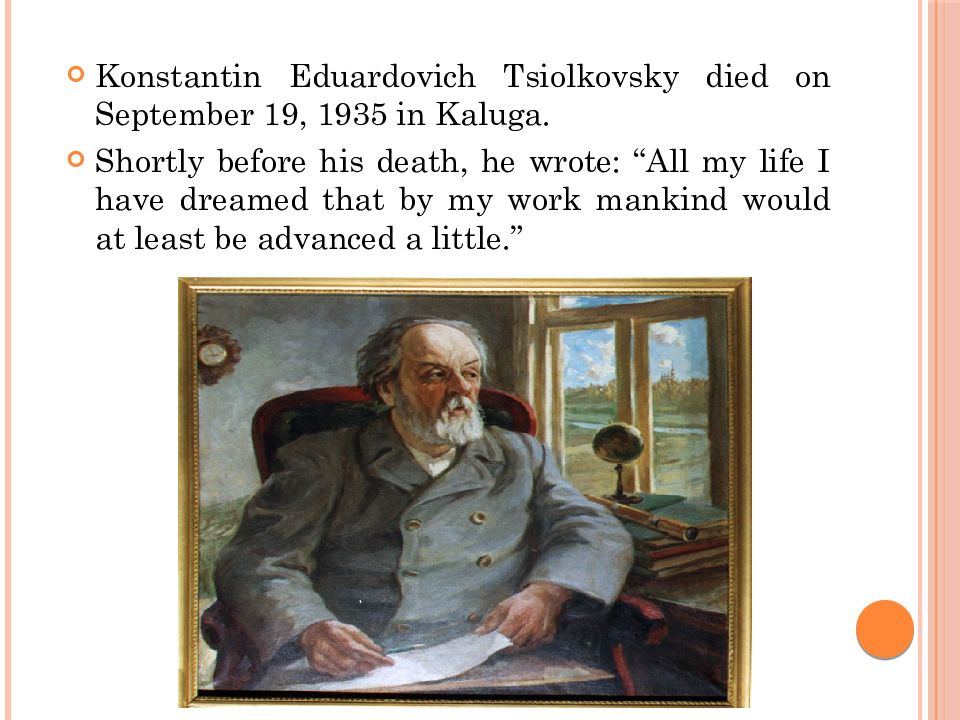Слайд 2
Konstantin Eduardovich Tsiolkovsky was born on September 5, 1857 in the village of Izhevskoe located on the territory of the Ryazan province. His parents Maria Ivanovna Yumasheva and Eduard Ignatievich Tsiolkovsky were nobles. In his chilldhood, Tsiolkovsky almost completely lost his hearing.
Слайд 3
Tsiolkovsky was 16 years old when he was sent to Moscow to continue his study. He regularly visited the Chertkovskaya Library. Tsiolkovsky actively studied higher mathematics, physics and astronomy.
Слайд 4
In 1878, the Tsiolkovsky family returned to Ryazan. A year later, he successfully passed the exam to qualify him as a teacher. He went to Borovsk (Kaluga Province) and taught math. Later he married Varvara Sokolova, who became the mother of his seven children.
Слайд 5
His first scientific work focused on the kinetic theory of gases. In Borovsk, Tsiolkovsky started drafting designs for airships. His first work on this subject, published in 1892, proposed an airship with metal skin.
Слайд 6
In 1892, Konstantin Tsiolkovsky moved to Kaluga. He combined his work with his scientific researches. There Tsiolkovsky turned his eyes toward flight. He began the creation of heavier-than-air aircraft and developed Russia's first wind tunnel.
Слайд 7
In 1897 he created his famous formula that is now known as the basic rocket equation. The scientist also gave a description of a space rocket with a liquid fuel engine the idea of creating near-Earth stations as artificial settlements.
Слайд 8
For the first time, he solved the problem of landing a spacecraft on the surface of planets devoid of atmosphere. Later Tsiolkovsky gave calculations necessary to overcome the force of gravity and flight time. In 1929, he originated the concept that is today called "rocket staging" and proposed
Слайд 9
After the Great October Socialist Revolution, Tsiolkovsky's scientific work received state support. In 1918, the scientist was elected a member of the Socialist Academy.
